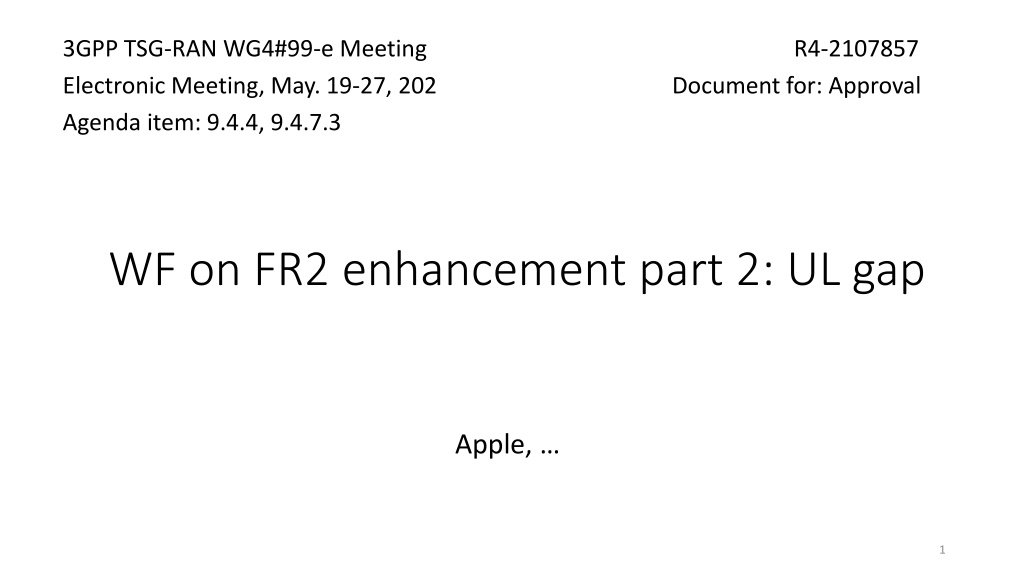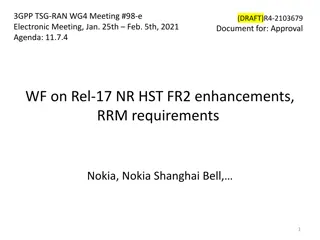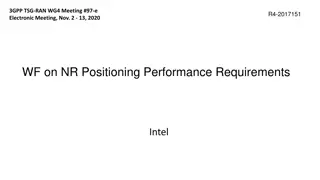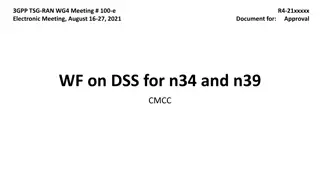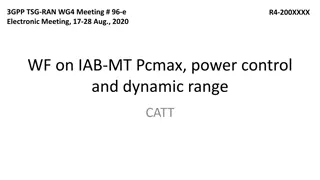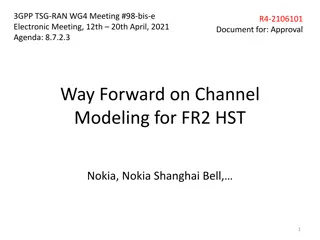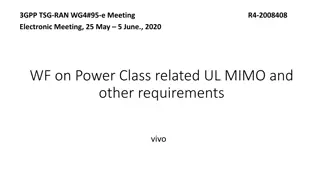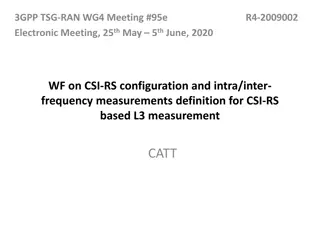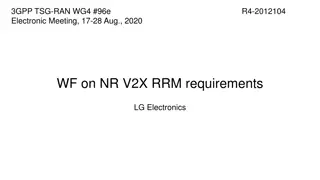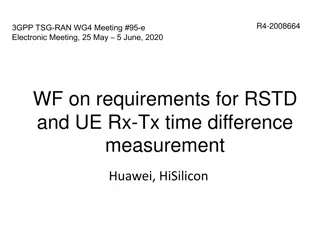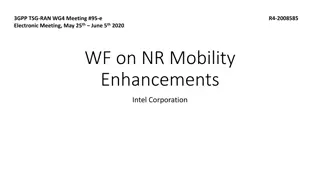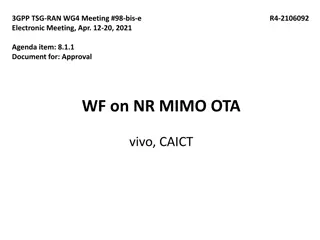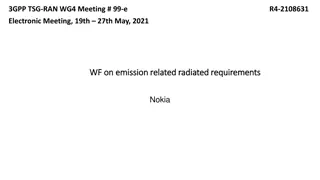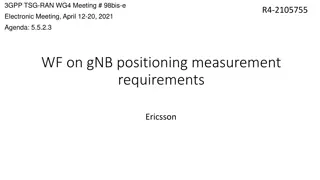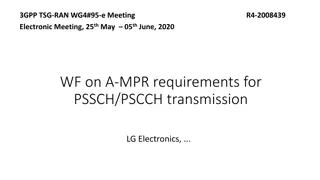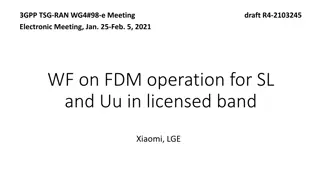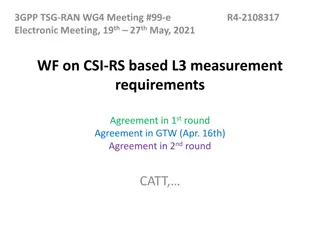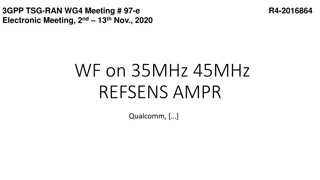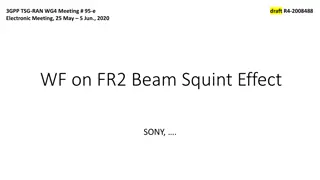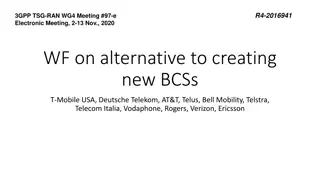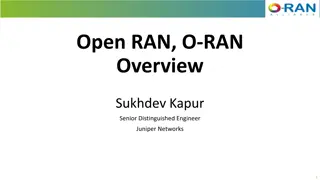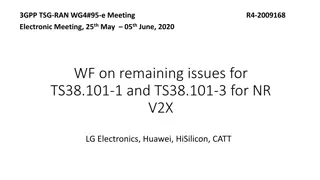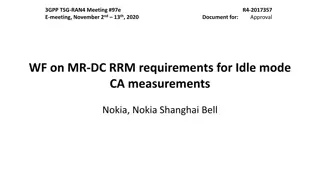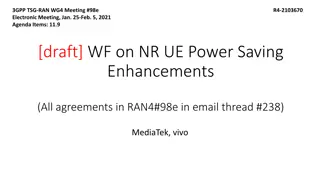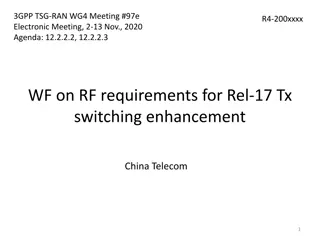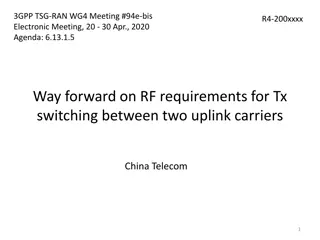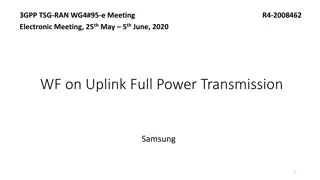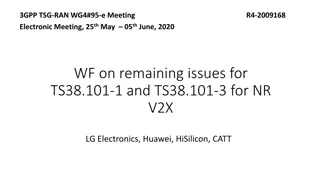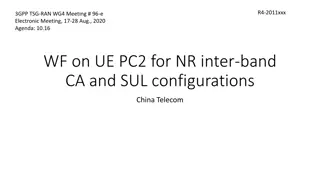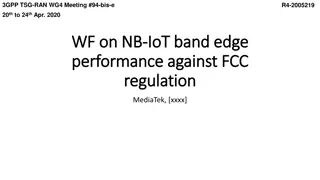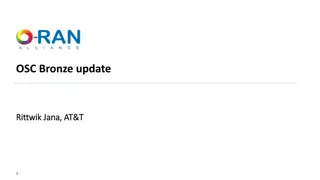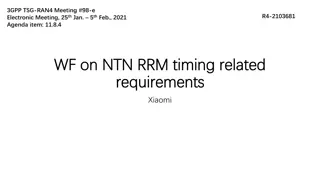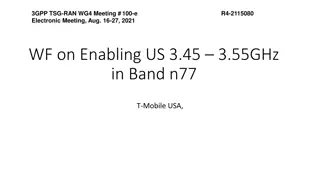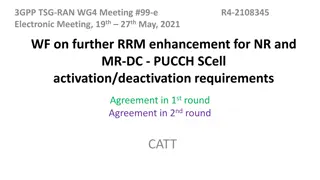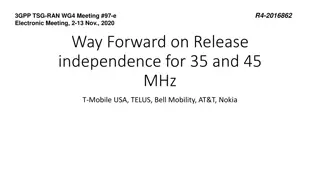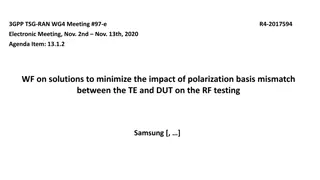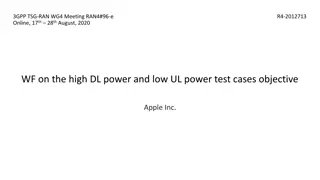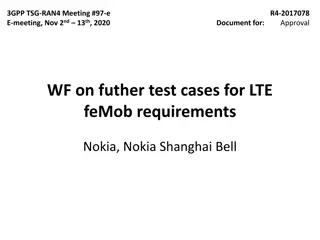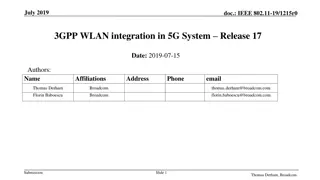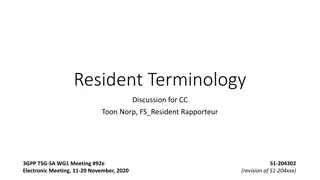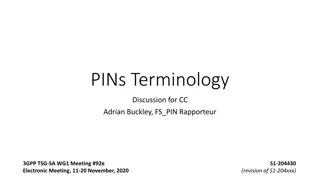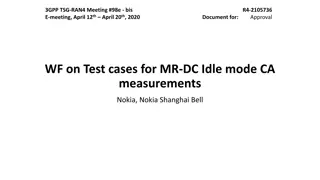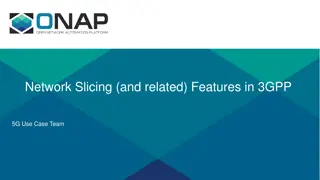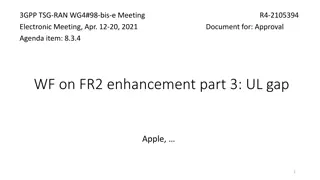3GPP TSG-RAN WG4 #99-e Meeting Document Summary
Approval agenda items discussed in the 3GPP TSG-RAN WG4 #99-e meeting included enhancements for UL gap for FR2, issues related to Tx power management, recommendations on RAN configurations, and coherent UL MIMO. The documents and images shared highlight key agreements and discussions on various topics like P-MPR, phantom or blocking in UL gap testing, and UL gap activation via RRC signaling. Recommendations were made for revising the WID scope, introducing new use cases, and aligning codebooks between UE and NW for performance gains in MIMO technologies.
Download Presentation

Please find below an Image/Link to download the presentation.
The content on the website is provided AS IS for your information and personal use only. It may not be sold, licensed, or shared on other websites without obtaining consent from the author. Download presentation by click this link. If you encounter any issues during the download, it is possible that the publisher has removed the file from their server.
E N D
Presentation Transcript
3GPP TSG-RAN WG4#99-e Meeting R4-2107857 Electronic Meeting, May. 19-27, 202 Document for: Approval Agenda item: 9.4.4, 9.4.7.3 WF on FR2 enhancement part 2: UL gap Apple, 1
Way forward General issue Recommended agreements: Subject to RAN plenary decision, RAN4 agrees to revise WID scope by deprioritizing gaps for PA calibration Further discussion: Whether revise WID scope by deprioritizing gaps for TRX calibration 2
Way forward Tx power management: RF aspect Agreements: It is feasible to enable non-zero P-MPR in Tx power management and BPS related UL gap testing. zero P-MPR assumption for the existing test cases keeps unchanged On the test setups for UL gap based Tx power management. Option 1: Based on P-MPR report with/without blocking Option 2: Based on peak EIRP measurement with/without blocking On mandating P-MPR reporting for the UE who is configured with UL gap for BPS based Tx power management. Option 1: Yes (Qualcomm, Nokia, Sony, Verizon, Apple, Samsung, Intel) Option 2: No. It is optional (OPPO, Huawei, Hisilicon) Option 3: depending on the conclusion of test case setup (Ericsson, vivo) On phantom or blocking be introduced in UL gap testing. Possible agreement: Continue discussion the test setup and requirement with and without phantom or blocking until RAN4 101e. If no conclusion on test feasibility of phantom or blocking by RAN4 101e, the requirement/test will be specified based on the assumption of no phantom/blocking. On the RF requirement for the UE who is configured with UL gap for BPS based Tx power management Exact RF requirement will be based on test set up. 3
Way forward Tx power management: RRM aspect Recommended agreements: The baseline assumption for UL gap related configurations: UL gap is configured by NW via RRC signaling. Once UL gap is configured, it can be additionally activated or deactivated. It is FFS that the configured UL gap(s) can be activated/deactivated via MAC CE and/or DCI Gap configuration candidates: Candidates for gap periodicity: 5ms, 20ms, 40ms, 80ms, 160ms Candidates for gap duration: 125us, 250us, 500us, 1000us One bit signaling: Further discussion if a mutual signalling method using one-bit RRC flag from BS(s) and capability from UE(s) should be introduced as a package with introduction of UL gap feature to address possible problems on NW deployment 4
Way forward Coherent UL MIMO Recommended agreements: No testability issue of coherent UL MIMO is identified. Subject to RAN plenary decision, it is recommended to revise the WID with updated scope to include the coherent UL MIMO as new use case. Is performance gain shown between coherent MIMO with calibration and non-coherent MIMO? NW impacts with respect to gap type (e.g. type 1 or 2) and the codebook assumption alignment between UE and NW 5
Contributions List in RAN4#98-e T-doc No. Title Company UL Gap testability and configuration aspects Qualcomm Incorporated R4-2108797 UL gaps for Tx power management RF aspect Apple R4-2109341 UL gaps for Tx power management RRM aspect Apple R4-2109363 Discussion on gap for PMPR calibration vivo R4-2109657 Network impact of UE FR2 UL Gap for UE Tx power enhancement Nokia, Nokia Shanghai Bell R4-2109744 Requirements and test cases of for P-MPR/EIRP enhancements for UE FR2 UL Gap Nokia, Nokia Shanghai Bell R4-2109745 Discussion on UL gap for self-calibration and monitoring ZTE Corporation R4-2109762 FR2 UL gap for power management (P-MPR) and Tx calibration (peak EIRP) NTT DOCOMO INC. R4-2110033 R17 FR2 UL gap for coherent UL MIMO OPPO R4-2110826 R17 FR2 UL gap for power management OPPO R4-2110827 Further consideration on UL calibration gaps Ericsson R4-2111151 Discussion on RRM impacts of UL gaps for self-calibration and monitoring vivo R4-2111260 On FR2 UL gap for coherence calibration Huawei, HiSilicon R4-2111383 6
Reference [1] R4-2107664, Email discussion summary for [99-e][138] NR_RF_FR2_req_enh2_Part_2 , Apple 7
